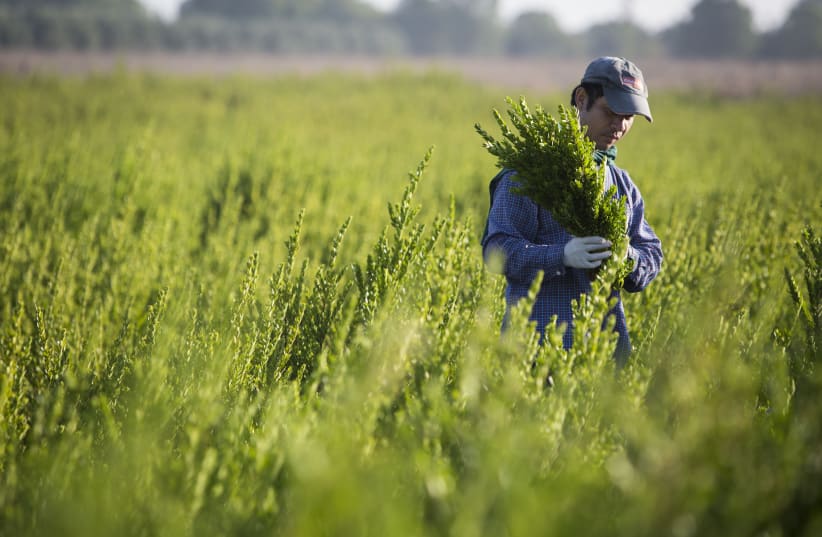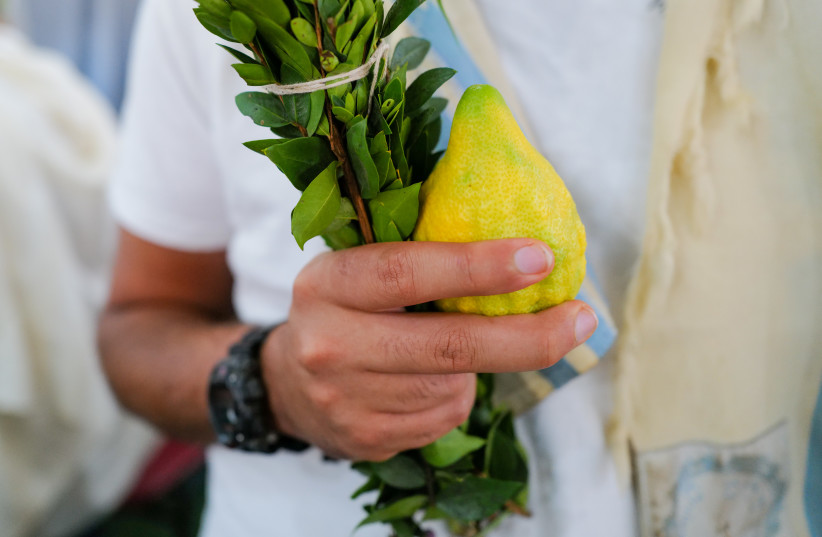The Four Species of Sukkot are fundamentally different from the typical items used for the performance of a mitzvah. Objects which are generally employed for mitzvot come in two varieties. Some of these, such as a Sefer Torah, contain the written word of God. While a Sefer Torah contains the entirety of God’s word, tefillin and mezuza parchments contain excerpted “highlights” from the Torah.
Other mitzvah objects, while not containing Torah texts, possess historical symbolism. These recall important historical milestones, moments when the very same objects were utilized. For example, eating matzah recalls our exodus from Egypt when we ate the very same matzah, amid the chaos of our speedy departure. Likewise, our modern sukkot are replicas of the actual huts which sheltered us from the harsh desert conditions during our journey to Israel. Consuming matzah or residing in a sukkah reconstructs foundational moments of Jewish history.
The importance of Sukkot's Four Species
These two brands of mitzvah objects represent the two primary avenues of religious experience: God’s word and Jewish history.
The Arba Minim (Four Species) of Sukkot are different. Devoid of any preexisting religious symbolism, they don’t bear words of Torah, nor do they directly recall any historical precedent. There was no momentous event in Jewish history which featured the Four Species. The Four Species of Sukkot have no classic historical or divine symbolism.
DIVINE BEAUTY in nature: The Four Species conjure up a third avenue of spiritual connection – the beauty and diversity of God’s natural world. The bouquet of the Four Species incorporates a variety of natural elements. The tall lulav is harvested from a towering date tree, while the aromatic hadassim, or myrtle branches, are gathered from a lowly bush. The lulav grows on a tree which produces delicious and nutritious fruit, and yet the hadassim branches stem from a bush which is barren of fruit but imbued with sweet fragrance. The etrog (citron) is a fruit with a pleasant scent and proven medicinal benefits, due to its high concentration of vitamin C. The sinuous aravot are cut from whispering reeds which rise alongside murmuring brooks. Together, these four assorted components encapsulate nature’s beauty, variety, and functionality. Together, they showcase the divine masterpiece of nature. On Sukkot, clutching these four icons of nature’s beauty affirms that God can be discovered not only in His word or in His historical intervention but through nature as well.
Obviously, the most direct way to serve God and to discover religious meaning is to study His written word and to apply His divine will to our daily lives. God Himself lies beyond the reach of human comprehension and expression, and for this reason Judaism always prioritized Torah study over philosophical inquiry. Alongside Torah, remembering historical milestones and recalling divine miracles also provide us access to God and to religious meaning.
The Four Species provide a third route to discovering Him, independent of His word and unrelated to any historical context. We can identify God in the magnificence of His natural world.
NATURE OF mankind: If we can discover God in the beauty of the world which surrounds us, we can likewise trace Him in the grandeur of the world within us. Just as the beauty of nature speaks of divine glory, similarly the magnificence of mankind reflects divine wisdom. Nature signals God through its beauty, while mankind reflects God through His innate human virtue.
For this reason, the Midrash associates the Four Species of nature with four major human organs. Establishing this correlation between elegant articles of nature and human organs underscores that both nature’s splendor and the magnificence of mankind reflect God.
The etrog corresponds to the human heart, the seat of our emotions and our consciousness, each of which is exclusive to human beings. The aravot symbolize lips and the capacity for cognitive communication, a trait which we alone possess. The hadassim leaves evoke human eyes. Though many animals can see, and some have better sight than humans, we are the only creature gifted with vision, allowing us to imagine realties which don’t yet exist. Our eyes work differently. Finally, the lulav corresponds to the human spine, which is structured as a double curve, aligning our heads and torso into a vertical line above our feet, allowing us to walk upright. We don’t face the ground, scraping by on our knuckles, but stand upright and noble before God.
The Four Species remind us that, as God’s masterpiece, we are delicately crafted and, additionally, are endowed with innate purity and intrinsic virtue. The Four Species invite us to trace God through nature’s beauty, as well as through the grandeur of human potential and the glory of human virtue.
Human kindness and “natural” morality are expressions of God’s will and should inspire religious meaning.
As religious people, we strive for a more elaborate religious experience which incorporates commandments, Torah study, prayer, and historical consciousness. However, we also accredit the intrinsic moral values of a pure human heart. Virtue and nobility were downloaded into our hearts by God, and they must also provide religious inspiration.
RESPECTING GOOD human beings: This concept has particular resonance on Sukkot and special urgency for this coming Sukkot. Sukkot is a chag of unity, one of the three times a year during when the entire population pilgrimaged to Jerusalem for a national convention. Additionally, once every seven years, on this chag the seminal moment of Sinai when we all stood united before God was reenacted through the ceremony of hakhel (assembly).
After a year of social strife and intense and even violent disagreements, we are in desperate need of recipes for national unity.
There are many varieties of unity, but the most superior and durable unity must be built upon mutual respect and acknowledging the merits of people with different lifestyles. Appreciating that differing values enhance our own experience fosters greater unity and enables a more profound feeling of solidarity. Appreciating and respecting the “other” is crucial to genuine unity.
However, respecting others who are different doesn’t always come easy for religious Jews. Torah and religion are so primary to our identity that we legitimately struggle to respect those who operate outside the boundaries of classic religious observance.
The first step to mending our ruptured social fabric in Israel is learning to respect other members of our struggling democracy, especially secular Jews.
Many secular Israelis lead deeply meaningful lives of values, of moral, spiritual, and patriotic commitment to our people, to this land, and to our joint history without being classically “religious.”
There is something magical about the encounter between a Jewish heart and the soil of our homeland. When the two meet, something deeply spiritual emerges, even if that spirituality isn’t framed in classical religious terms.
If we respect their values and lifestyle, even without completely validating a non-religious lifestyle, we must also accommodate their wants and interests. If Orthodox Jews are unable to identify any value in secular Israel, genuine unity built upon mutual respect will remain elusive.
The “natural” symbolism of the Four Species illustrates that natural human goodness is an expression of the divine, even when it isn’t accompanied by full religious commitment. We should respect all good human beings, and in particular, those with whom we share both this land and a common destiny.
The writer is a rabbi at Yeshivat Har Etzion/Gush, a hesder yeshiva. He has smicha and a BA in computer science from Yeshiva University, as well as a master’s degree in English literature from the City University of New York.

